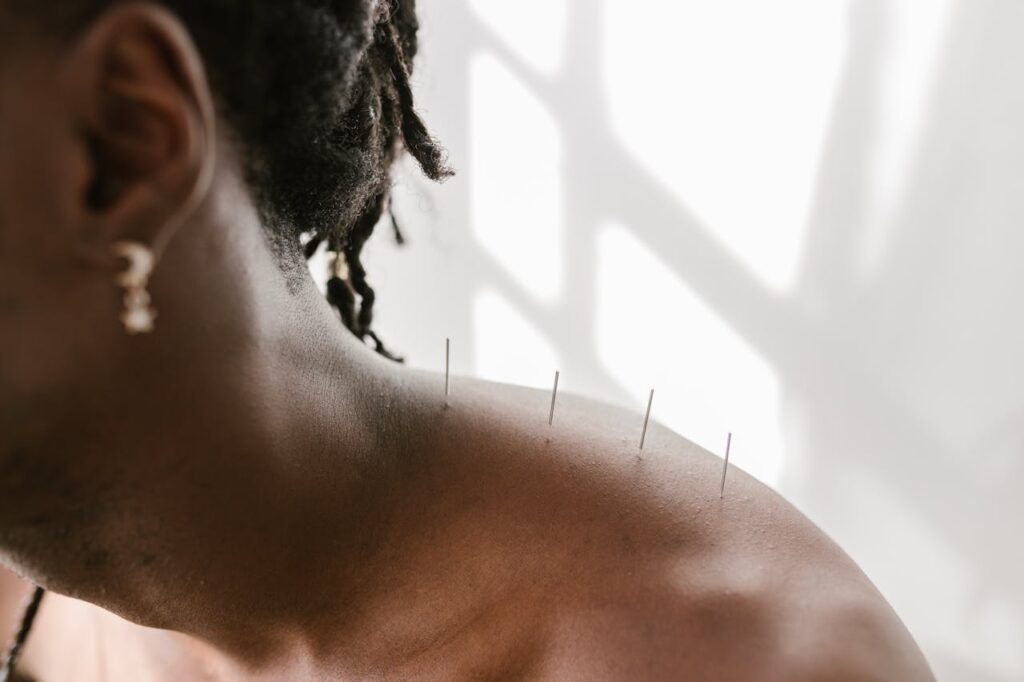Acupuncture
Fine needles are placed into specific energy points along the body’s meridians. This stimulates body functions, activates the flow of energy, and helps release blockages. The selected points work in combination and can be located in very different areas of the body – not always where the patient feels the symptoms.
Acupuncture needles are extremely thin, usually only 0.25 mm in diameter (not 1–2.5 mm). A glance through the microscope reveals their rounded tip – not sharp like a syringe. Used correctly, the needle finds its way gently through the tissue. Sensations vary: some people feel nothing at all, others describe tingling, pressure, or a slight prick – depending on individual sensitivity (and sometimes a little nervousness).
After about 30–45 minutes, the needles are removed and the session is complete. But that doesn’t mean the treatment is over: the stimulation of the points sends signals through the body, which then need time to unfold. If possible, it’s advisable to take the rest of the day a little easier after an acupuncture treatment, and avoid heavy activities or stressful situations.

Chinese Herbal Medicine (Pharmacology)
Often referred to as “Chinese herbs,” this term is actually a little misleading. In Chinese herbal medicine, not only herbs are used, but also minerals and animal products, alongside a wide variety of different parts of plants and mushrooms.
The ingredients of a formula are simmered for a long time to extract their active compounds and create a highly effective decoction. To make this easier for daily life, most patients are prescribed granules – pre-cooked decoctions that are dried into powder and then simply dissolved in hot water. For those who enjoy the traditional process, preparing your own decoction at home is of course possible.
Taste-wise, these formulas are not always a culinary delight. Since the focus lies on therapeutic effect rather than enjoyable flavour, some combinations can be bitter or unusual. For sensitive taste buds, however, there are solutions – for example, encapsulating the granules.

Tuina Massage – Li Style
Calling Tuina simply a massage doesn’t do it justice. Tuina brings together all manual techniques of Chinese medicine. It includes classic massage movements such as circular pressure on tense muscles, but also so much more. Some techniques are so gentle they are hardly felt, while others involve tools such as towels, silk cloths, or wooden massage sticks.
As with all branches of Chinese medicine, the most important aspect in Tuina is its holistic approach. Knee pain, for example, may stem from misalignment elsewhere in the body. The body is seen as a whole – problem areas are never treated in isolation. The understanding of Tuina is deeply rooted in the principles of T’ai Chi, which teaches how the body moves in harmony, releases old blockages, and stays in flow. Tuina applies this knowledge to restore a balanced flow of Qi in others.
The Li style is a very rich and detailed family tradition, encompassing not only Tuina but also T’ai Chi, Qi Gong (K’ai Men and Dao Yin exercises), and martial arts (Feng Shou, Chi Shu, and Shuai Jiao). Since 1995, the Taoist Arts Organization has been teaching the full breadth of the Li style – you can read more about it here.



